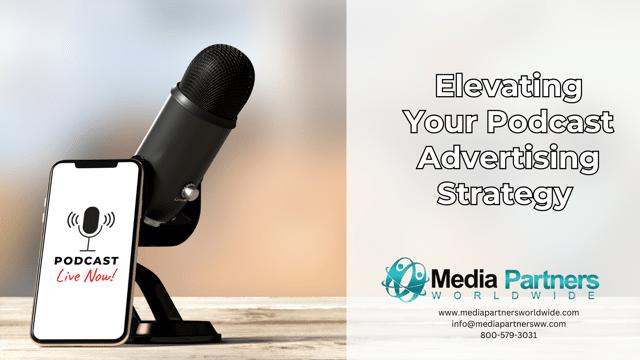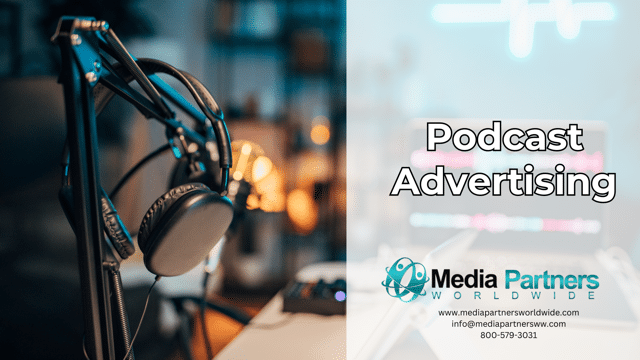For Direct Response advertisers and brands, the quest for innovative means to connect with target audiences while meticulously measuring campaign effectiveness is an ongoing pursuit. In recent years, one avenue has emerged as a potent force – podcast advertising. With over 104 million Americans tuning into podcasts monthly, this medium offers an exceptional opportunity to engage a highly attentive audience. However, a pivotal question remains: How can you precisely measure the success of your podcast advertising endeavors? The answer lies in attribution.
Attribution, in the realm of podcast advertising, is the linchpin for tracking and evaluating the efficacy of your advertisements. It empowers you to discern which specific ads drive conversions, enabling you to fine-tune your campaigns for optimal return on investment (ROI). Here’s how you can skillfully employ attribution to elevate your podcast advertising strategy:
- Illuminating Listener Behavior: Attribution provides a comprehensive lens through which you can observe listener behavior intricately. It unveils crucial insights, including when listeners encounter your ad, the duration of their engagement, and post-ad interactions. This wealth of data paints a vivid portrait of your audience’s preferences, enabling you to tailor your ads for maximum resonance.
- Conversions in Focus: A fundamental advantage of attribution is its precision in monitoring conversions. By deploying unique promo codes or dedicated landing pages, you can meticulously track the number of listeners converting after hearing your ad. This invaluable data helps identify the most effective podcasts or ad formats, enabling you to allocate your budget judiciously.
- Real-Time Campaign Optimization: Attribution data isn’t static; it fuels real-time campaign optimization. Armed with a deep understanding of which ads trigger conversions, you can adapt your strategy to emphasize the most effective tactics. This agile approach can yield elevated conversion rates and a superior ROI.
- Validating ROI: Ultimately, attribution serves as the irrefutable proof of your podcast advertising ROI. By showcasing the conversions your ads drive, you can demonstrate the tangible value of podcast advertising to potential clients and stakeholders.
Nevertheless, it’s imperative to acknowledge that podcast attribution presents its share of challenges. Due to the medium’s unique nature, tracking can be less precise compared to other digital advertising avenues. Listeners might skip ads, employ diverse devices for listening, or take action well after hearing an ad – all variables that introduce complexity into attribution.
In spite of these challenges, attribution in podcast advertising remains a treasure trove of insights to optimize campaigns and affirm the medium’s value. By comprehending and harnessing attribution, you can maximize the potential of your podcast advertising endeavors, delivering results that resonate with potential customers.
In summary, when combined with effective attribution, podcast advertising becomes a potent asset in your marketing arsenal. It empowers you to reach an engaged audience, measure campaign effectiveness, and refine your strategy for peak ROI. So, if you’re looking to educate potential clients about the merits of podcast advertising, commence by unlocking the potential of attribution.
Exploring Attribution Tools for Podcast Advertising Excellence
A plethora of tools and programs cater to attribution in podcast advertising. Here are a few distinguished options:
- Podsights: This widely acclaimed podcast attribution platform delves deep into understanding the impact of podcast ads. It employs a blend of direct response tracking and lift analysis to offer insights into listener interactions with ads.
- Chartable: Chartable extends podcast attribution services that monitor listener behavior across various platforms. It employs unique device identifiers to track when listeners download a podcast post-ad exposure.
- Claritas: A marketing firm, Claritas, presents a podcast attribution solution powered by device graphing and identity resolution. It meticulously tracks the effectiveness of podcast ads.
- Barometric: Barometric offers a comprehensive ad tracking and attribution solution applicable to podcast advertising. It utilizes IP address matching and device ID matching to trace listener behavior.
Other notable players in this arena include Podscribe and ArtsAi.
These attribution tools furnish invaluable insights into listener behavior, enabling advertisers to pinpoint which ads yield results and where their advertising efforts should be concentrated. If you’re keen to delve deeper into launching a podcasting campaign, reach out to us at [email protected]. At Media Partners Worldwide, we’ve been at the forefront of direct response audio for over 26 years – your trusted ally in navigating the evolving landscape of media and marketing.










 ng wide, YouTube is mainstream, and podcasting is growing. Below is an article by Brad Hill, published earlier this year, that details the study.
The 2015 edition of The Infinite Dial was unveiled in March 2015 by survey producers Edison Research and Triton Digital. In its 23rd edition, The Infinite Dial is one of the most significant and respected research projects in the streaming audio industry.
A major headline came when John Rosso of Triton said that 53% of American adults listen to online radio at least monthly — an estimated 143-million individuals. (“One of the most significant findings of this year’s study,” said Rosso.) Holding to demographic tendencies of previous Infinite Dial editions, uptake of streaming radio is weighted to youth. The 12-24 demographic shows 77% listening to online radio each month.
Weekly online radio listening continues its upward march in the 2015 results — 44% of Americans listen at least weekly. That is an estimated 119-million people. In the 2000 survey, two percent of Americans made the same claim. (There has not been a year-over-year decrease during that span.) Weekly listening also skews young, with 69% of the 12-24 group listening weekly.
How about time spent? Edison found that the average weekly time spent listening to online radio was 12 hours and 53 minutes — a slight drop from last year (13:19). but with a large year-over-year jump in audience size (from 36% of Americans to 44%), the overall time spent with online radio is much higher.
Where does the listening happen? Mobile dominates, and is growing — 73% use smartphones, increased from 66% last year. Computers are still in frequent use, but declining from 64% in 2014 to 61% this year.
The presentation provided deep dives into several research topics:
ng wide, YouTube is mainstream, and podcasting is growing. Below is an article by Brad Hill, published earlier this year, that details the study.
The 2015 edition of The Infinite Dial was unveiled in March 2015 by survey producers Edison Research and Triton Digital. In its 23rd edition, The Infinite Dial is one of the most significant and respected research projects in the streaming audio industry.
A major headline came when John Rosso of Triton said that 53% of American adults listen to online radio at least monthly — an estimated 143-million individuals. (“One of the most significant findings of this year’s study,” said Rosso.) Holding to demographic tendencies of previous Infinite Dial editions, uptake of streaming radio is weighted to youth. The 12-24 demographic shows 77% listening to online radio each month.
Weekly online radio listening continues its upward march in the 2015 results — 44% of Americans listen at least weekly. That is an estimated 119-million people. In the 2000 survey, two percent of Americans made the same claim. (There has not been a year-over-year decrease during that span.) Weekly listening also skews young, with 69% of the 12-24 group listening weekly.
How about time spent? Edison found that the average weekly time spent listening to online radio was 12 hours and 53 minutes — a slight drop from last year (13:19). but with a large year-over-year jump in audience size (from 36% of Americans to 44%), the overall time spent with online radio is much higher.
Where does the listening happen? Mobile dominates, and is growing — 73% use smartphones, increased from 66% last year. Computers are still in frequent use, but declining from 64% in 2014 to 61% this year.
The presentation provided deep dives into several research topics: